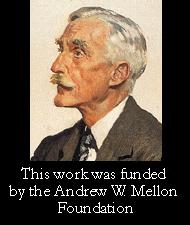| Increasing
Accessibility of Examples A Joint Project by: Peter
Blanchard (Miami University Hamilton)
|
GAP Projects
In studying abstract algebra, the process of experimentation, conjecture, and proof is strongly inhibited by a lack of data. While it is true that a good textbook will contain many well-known examples, those examples are usually introduced in the context of a single specific topic. Exploring an example in more depth or in a different context typically requires a prohibitive amount of computation.
What follows are six computer-based projects designed to enhance student
exploration and understanding by making examples, data, and computations
more accessible to students. The projects were used as a supplement to
a first-semester Abstract Algebra course. They rely on the software package
GAP (Groups, Algorithms,
and Programming), a freely distributed program designed to handle
large computations within and relating to groups.
GAP Primer --
A supplemental resource and reading assignment for the class.
Project 1. -- An Introduction to GAP
Illustrates the basics of GAP in the context of the group of rotations of a cube; Assumes no prior knowledge of GAP
pdf file: An Introduction to GAP
Project 2. -- Subgroups Generated by Subsets
Discusses subgroups generated by a subset from two viewpoints: the "top-down" approach using intersections, and the "bottom-up" approach using group closure
pdf file: Subgroups Generated by Subsets
Project 3. -- Exploring Rubik's Cube with GAP
Investigates the transformation group of Rubik's cube.
pdf file: Exploring Rubiks Cube
Project 4. -- Conjugation in Permutation Groups
Explores the relationship between the cycle structure of a permutation and cycle structure of its conjugate; Revisits permutations of the Rubik's cube.
pdf file: Conjugation in Permutation Groups
Project 5. -- Exploring Normal Subgroups and Quotient Groups.
pdf file: Exploring Normal Subgroups
Project 6. -- The Number of Groups of a Given Order
Explores the number of possible group structures for any given order; the class will need hints and encouragement on the last problem!
pdf file: Number of Groups of a Given Order
Questions or Comments?
E-mail: holdenerj@kenyon.edu or blanchpf@muohio.edu
|
|
| via an Enhancing Learning through Technology with Collaboration Grant |
| Many thanks to Scott Siddall for his support on this project. |
